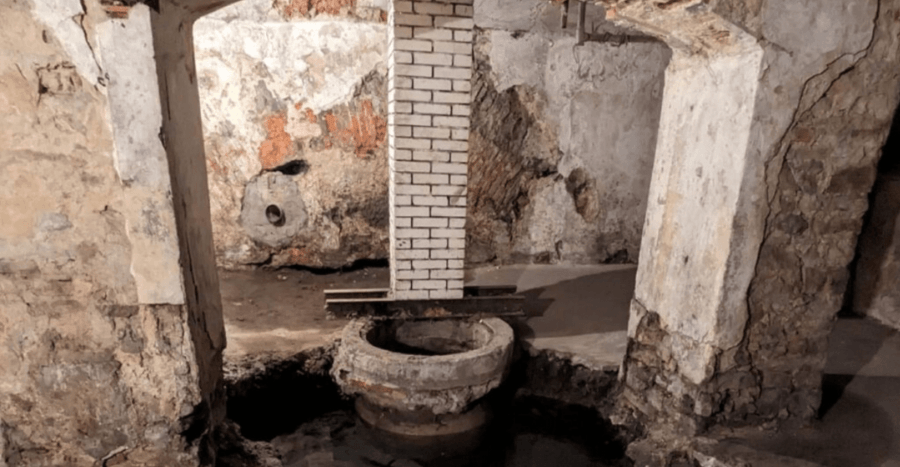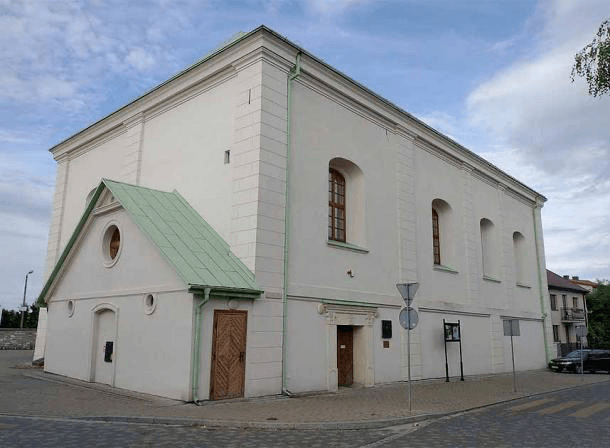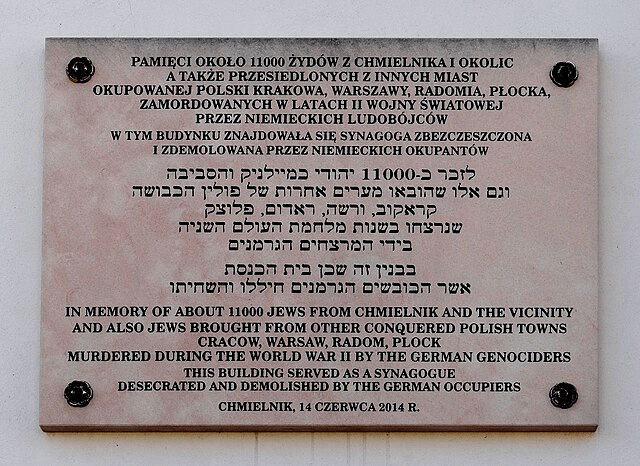The mikveh likely dates back to before World War II, when the Polish town of Chmielnik had a thriving Jewish community.

Ofer Adaret/Haaretz The Jewish ritual baths were used for purification before religious ceremonies or holidays.
The new owner of a shuttered Polish strip club was in for a big shock when he found a mikveh, or Jewish ritual bath, in the basement of his new property.
A few years ago, Marian Zwolski, a businessman from Chmielnik in Poland, purchased the Sphinx, a nightclub that has been out of business for 15 years. Relics of the club’s once thriving nightlife were still there — a Heineken sign on the wall, a pole in the middle of the room, a collection of ancient Egypt-themed decorations.
But the most interesting discovery happened when he opened the basement door.
In the basement was a historic, sacred Jewish bath, known as a mikveh. The baths are traditionally used for ritual purification — and the one in the basement of the Sphinx still had water in it.
What’s more, the original blue and white tiles and the Stars of David decorating the walls were still visible and in decent condition. In a neighboring room was a smaller mikveh, which was likely used by women.
“It’s astonishing,” said Meir Bulka, an advocate for the preservation of Jewish heritage in Poland, in an interview with Haaretz. “You enter the basement, and you’re in another world. It’s like a time capsule.”
Ritual purification is an important part of the Jewish faith and culture. Mikvehs are used to purify a person, granting them a spiritual rebirth before religious ceremonies or holidays.
They were also often used by women after menstruation, purifying them before they could resume marital relations with their husbands; this was more common in historical Judaism, but some conservative sects, such as Orthodox Judaism, still require this practice.
It’s unclear exactly how old the newly discovered mikveh is, but it’s likely it dates back to before World War II. Poland was a primary target for the Nazis leading up to the war. Before the Holocaust, Chmielnik had a population of around 10,000 — 80 percent of which was Jewish. After the war, the total number of Jewish people in Chmielnik was just four.
According to Ancient Origins, Chmielnik was settled by Sephardic Jews fleeing the Spanish Inquisition in the 1630s. The Jewish community in Chmielnik built a synagogue there and thrived throughout the 18th and 19th centuries, significantly contributing the the town’s culture and economy over the years.

Wikimedia CommonsThe Jewish Synagogue in Chmielnik is now a museum dedicated to those who lost their lives during the Holocaust.
But in 1939, the Nazis invaded Poland. On Sept. 5, they rounded up prominent Jewish figures in Chmielnik and herded them into a study hall, which they then set on fire. The remaining Jewish survivors were sentenced to forced labor in Chmielnik’s ghetto.
In 1942, the Nazis extinguished the ghetto, murdering hundreds of its Jewish residents and sending thousands more to the Treblinka death camp — the second-deadliest Nazi extermination camp after Auschwitz. Treblinka is estimated to have killed between 700,000 and 900,000 Jews, most of whom were Polish.

Wikimedia CommonsThe Jewish synagogue in Chmielnik is now a museum and memorial to the Polish Jews killed in the Holocaust.
Now, Zwolski said he plans to turn the site into a museum or tourist attraction.
“I was born and raised here, so I care about the history of the place. I don’t want it to disappear,” Zwolski said. “I encourage the people to remember the past and I also call on you, the Jews, to preserve it and see to it that it is memorialized.”
After reading about the historic ritual bath found in Poland, see these disturbing photos from the Jewish ghettos during the Holocaust. Or, read about the Jewish teenager who posed as a Nazi to survive the Holocaust.





